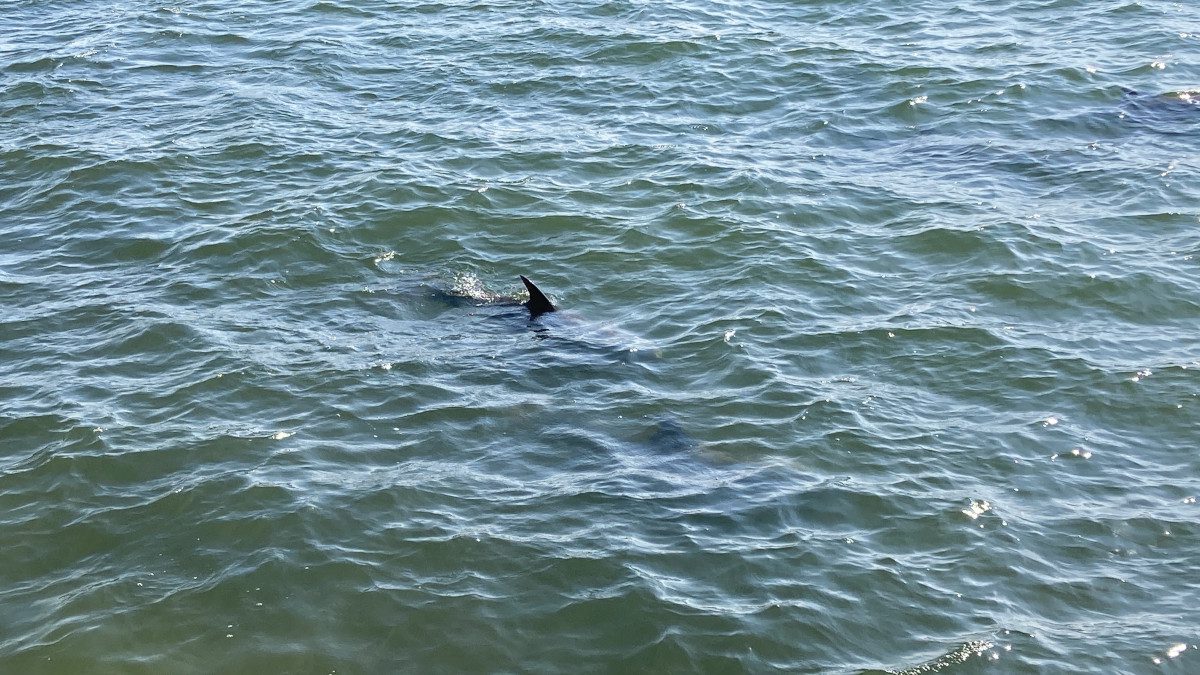
A recent paper in PLOS One presents evidence of dolphin inhalation of microplastics. An interview has been published with two of the authors, Leslie B. Hart (College of Charleston, USA) and Miranda K. Dziobak (College of Charleston; University of South Carolina, USA) which is reproduced here (credit: Molly Bisceglia, CC-BY 4.0 license).
What first drew you to study microplastic inhalation in dolphins, and why did you choose to investigate this topic?
Bottlenose dolphins live in many places around the world, including busy coastal areas where people live and work. Because of this, dolphins are exposed to various harmful chemicals found in the environment, including plastic, which is everywhere. Plastic is made of many chemicals, including some that can be harmful to humans. In partnership with Brookfield Zoo Chicago’s Sarasota Dolphin Research Program, we began studying exposure to these chemicals (phthalates) among dolphins living in an urban estuary (Sarasota Bay). Not only did we find that many of the dolphins were exposed to these chemicals, but their levels were higher than those found in humans. We do not yet know exactly where these chemicals are coming from, but the evidence points to plastic pollution as a possible source. There are trillions of tiny plastic particles (microplastics) floating in the oceans, and dolphins are likely exposed to them through what they eat and the air they breathe. We’ve been exploring the ingestion component for the past couple of years, finding microplastics in their stomach contents and prey fish. Now it’s time to explore the other primary exposure route.
What are the key findings from your research?
Just as we suspected, dolphins are breathing in microplastics. We studied dolphins living in an urban estuary and a rural estuary, and microplastics were found in samples collected from dolphins at both sites. This demonstrates what other researchers have found that airborne microplastics are everywhere, regardless of urbanization and development.
What most surprised or interested you about your findings?
We were most interested by the types of plastics we found because that can give us clues about where they came from. When plastic is made, there are many different substances (AKA polymers) that are used, which determine what type of product is eventually produced. For example, the polymer “polyethylene” is used to make plastic bags. We found that many of the plastics the dolphins were breathing in were made of polyester, which is one of the most common polymers used to make the clothing we wear. Particles are constantly shed from our polyester clothing every time we wear them, and especially when the clothes are washed. In fact, our clothes can generate millions of microplastic particles during every single wash cycle!

Can you explain how the inhalation of microplastics may adversely affect dolphins?
Dolphins have really large lung capacities and take really deep breaths, so they may inhale much higher doses than humans do. Human studies have demonstrated that microplastic inhalation can lead to lung inflammation and other respiratory problems, so if dolphins are breathing in high doses of plastic, they may be even more vulnerable to these health impacts.
Why should we be concerned that dolphins are inhaling microplastics?
Finding microplastics in the exhaled breath of dolphins highlights how extensive environmental microplastic pollution is. Because of their large lung capacity and deep breaths, we are worried that breathing in microplastics may damage their lungs. Finally, studies like this also warn us of hazardous exposures that people living and working in the coastal environment may be facing.
You say you expected microplastics to be present in both of the sites you visited; how do you think these environments were contaminated?
These plastics are super small and super lightweight, which makes them easy to transport. Some researchers have shown microplastics can travel through the air for thousands of miles. In fact, fibrous particles, which look like little pieces of string, are the easiest to transport, and can travel the furthest through the air. In populated cities like Sarasota, exposure may be linked to high levels of human activity. For areas like Barataria Bay that do not have very many people, it’s possible that microplastics were probably generated in a larger city and then transported through the air.
What do you hope your findings might lead to, and what are the next steps for your research?
We hope these findings will inspire people to reduce their own plastic consumption, for the health of themselves and the health of the dolphins.






